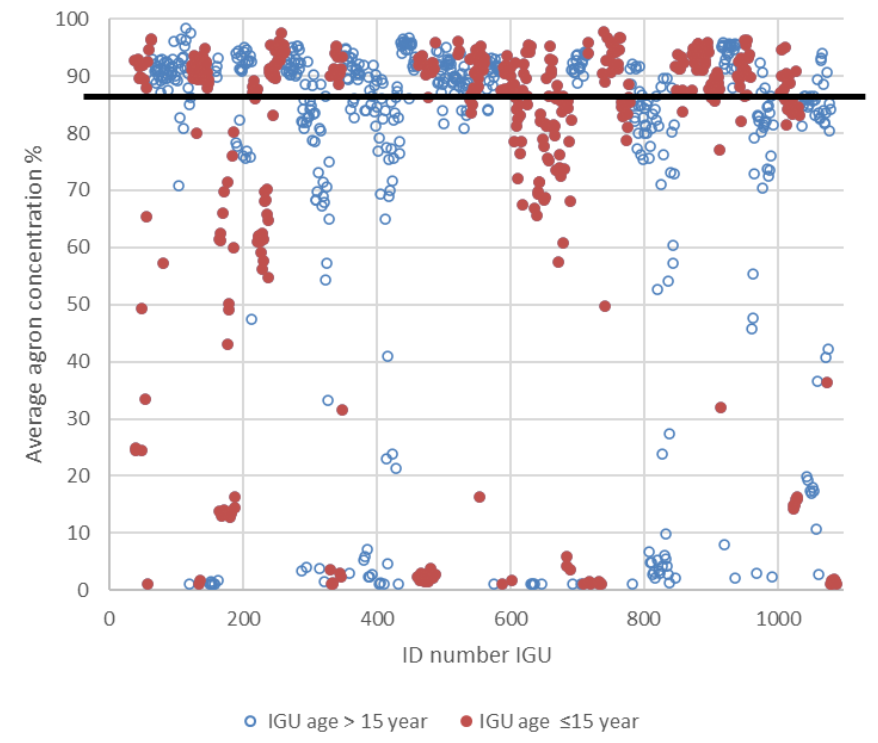The Reuse Potential of Hundreds of Insulating Glass Units in Buildings
A Case Study in The Netherlands

Abstract
Reuse of entire insulating glas units (IGUs) in façades is a high-level circular strategy to decrease material and energy use and CO2 emissions. Yet, how many post-consumer IGUs are fit for such a direct reapplication and comply to building regulations having a 90% nominal argon filling and a sufficient residual lifetime? To address this question, almost one thousand IGUs in more than 40 different buildings in The Netherlands were studied. The glass and cavity width and the argon concentration were measured with the Sparklike Laser Portable. Then, each IGU was double-checked with a standalone glass thickness meter to verify non-standard cavity widths. The product age was obtained via the spacer code or general building information. A threshold of maximum 15 years was set as general indicator of a residual service life of 10 to 25 years. The results of the applied method show that just over 50% of the IGUs meet the required argon concentration. Furthermore, the combination of a maximum IGU product age of 15 years and a 90% nominal argon fill resulted in 24% of tested IGUs as potentially suitable for reuse. The results raise questions about the reuse of IGUs in practice, which are discussed in this paper.
Published
Issue
Section
Circularity & Sustainable Solutions
License
Copyright (c) 2024 Esther Geboes, Waldo Galle, Niels De Temmerman, Ed Melet, Elke Van Nieuwenhuijzen

This work is licensed under a Creative Commons Attribution 4.0 International License.



